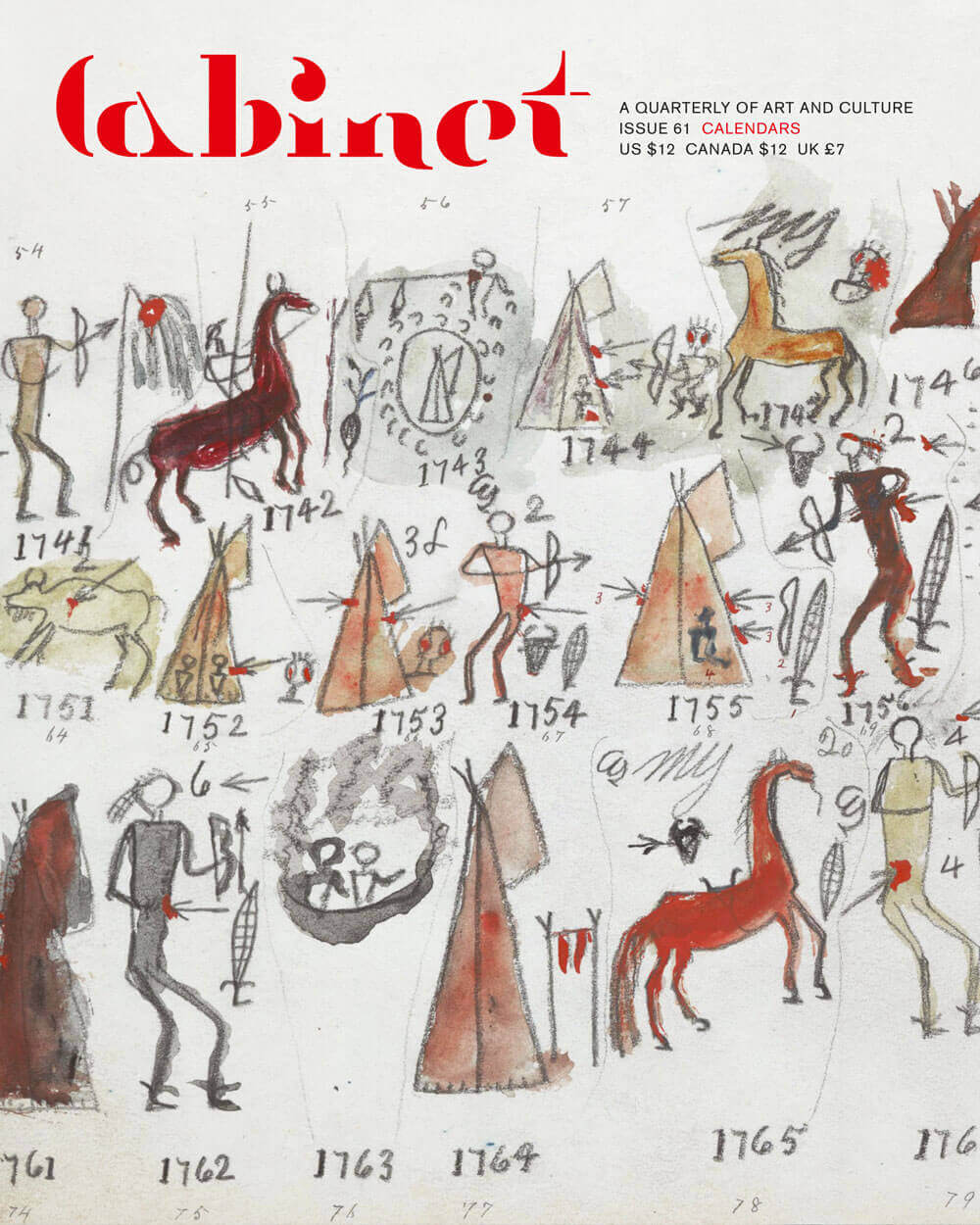Cover Story

Detail from a Lakota “winter count” calendar. Pictographic histories typically inscribed on animal hide, winter counts were maintained by “the calendar keeper,” an individual charged with selecting, often in consultation with tribal elders, one particularly memorable event from the past year to represent the entire year. Each year’s pictograph was added to those of previous years, producing a sequential chronicle that could be used to remember and recount the collective history of the particular band, or tiošpaye, comprising some 150 to 300 individuals. These calendars were known to the Lakota as waniyetu wowapi: waniyetu meaning “year,” which they measured from first snowfall to first snowfall, and is therefore often translated as “a winter,” and wowapi meaning anything that is marked on a flat surface and can be read or counted.
The winter count depicted here is a copy of one kept on cloth by Battiste Good, a Brulé Lakota who was the calendar keeper for his band. Good, whose Indian name Wapóštangi translates as Brown Hat, made the copy on nineteen pages in a sketchbook in 1880 at the request of Army surgeon William H. Corbusier. The numbers, which would not have been used in the original, are in Good’s hand and list the years, as well as certain clarifying details. Before dying, the calendar keeper would usually designate a successor, often a son or a nephew; after the death of Good, who lived on the Rosebud Reservation in present-day South Dakota, his son High Hawk took over his duties as keeper of the band’s winter count.
The detail reproduced here depicts years from the mid-eighteenth century, including 1742 (“attacked-them-while-gathering-turnips winter”), the drawing for which depicts an attack on a group of women from the band, and 1764 (“many-sticks-for-drying-beef winter”), whose pictograph commemorates a year in which the band had so much meat to dry that the entire village was crowded with drying racks.
Spotted an error? Email us at corrections at cabinetmagazine dot org.
If you’ve enjoyed the free articles that we offer on our site, please consider subscribing to our nonprofit magazine. You get twelve online issues and unlimited access to all our archives.